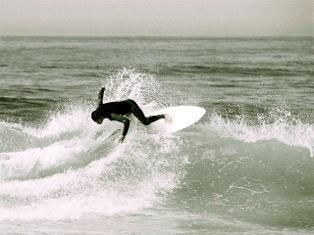Newsletter March 2013
General Wellbeing - What sports you're good at could be down to genetics...
Following from last month's newsletter on how the body creates and uses energy, this month I thought I'd look at how our natural muscle physiology may influence what sports we have a pre-disposition to do well in. Now I've touched on the different 'global' muscle functions before, such as whether they are stabilisers, or mobilisers. However, I've not yet mentioned the fact that the strands making up these muscles are different blends of fibre types, and depending on your body's natural make up, you may have a predisposition toward one fibre type over another.
In short, there are 3 different muscle fibre types:
Slow twitch muscle fibres (type 1)
Fast twitch (type 2b)
Fast twitch (type 2a) - no I haven't got these the wrong way round...you'll see why in a minute
Type 1 fibres
Are best suited to endurance activities as they produce lower levels of speed and power, they can therefore maintain this output for longer periods of time.
Type 2b fibres
These are able to contract more quickly than type 1 fibres but have poor endurance capabilities and tire quickly, they are more suited to short intense bursts of activity, rather than endurance.
Type 2a fibres
These are not a particularly common type of fibre and fall between type 1a and 2b, they have a greater endurance than type 2a fibres but not as much endurance as type 1 fibres.
Why the difference?
The difference in fibre type is determined by the size of the motor neurone that innervates it, fast twitch fibres have a large motor neurone, which enables it to contract more quickly. The slow twitch fibres are supplied by a smaller neurone, this means the contraction is about 3 times slower.
Distribution of fast and slow twitch fibres in the body

As I've mentioned already different muscles are either mobilisers or stabilisers, and because of that they will have a different blend of fast and slow twitch fibres to suit the tasks required of them. Furthermore, the muscles within those sub-groups will also differ in their fibre make-up. To elaborate, you can reasonably expect your leg muscles to have a greater proportion of type 1 fibres, to enable you to walk long distances, compared to the ones in your arms, which are required to do shorter sharper movements, such as catching. In return, your arms will have many more type 2b fibres than type 1.
Having said that across the 'average' person's body the overall split between fast twitch and slow twitch fibres will be 50/50. It is believed that with training you can influence the spilt by no more than 10% either way, however, it has been shown in elite athletes that they can have a split as dramatic as 80/20 in favour of one fibre type over another; so world class sprinters can have up to 80% fast twitch and marathon runners 80% slow twitch fibres.
In summary then, (at least part of) your natural athletic ability really does depend on genetics...whether you're a sprinter, a marathon runner, or somewhere in between.
